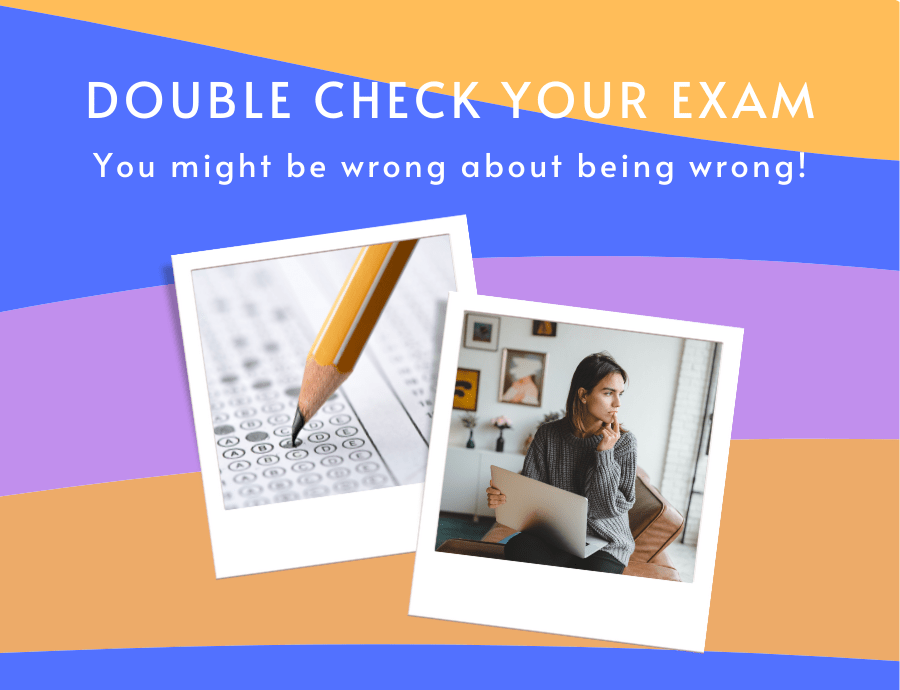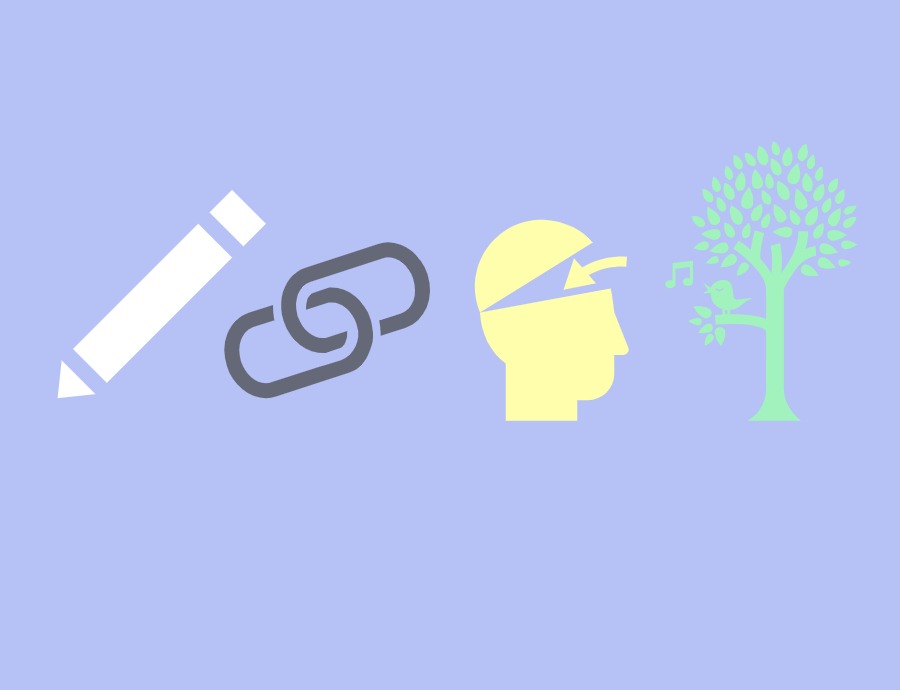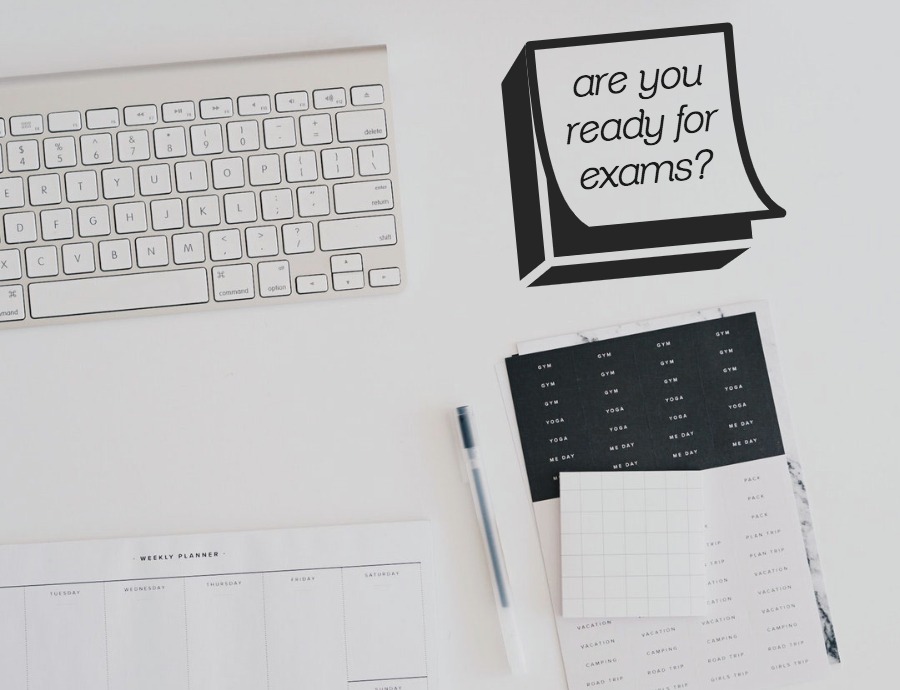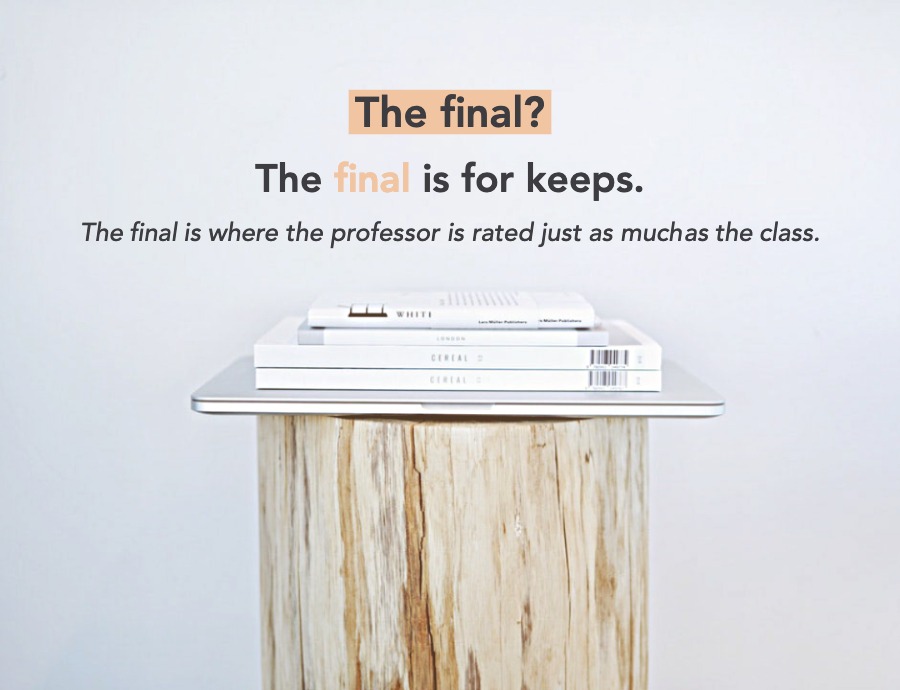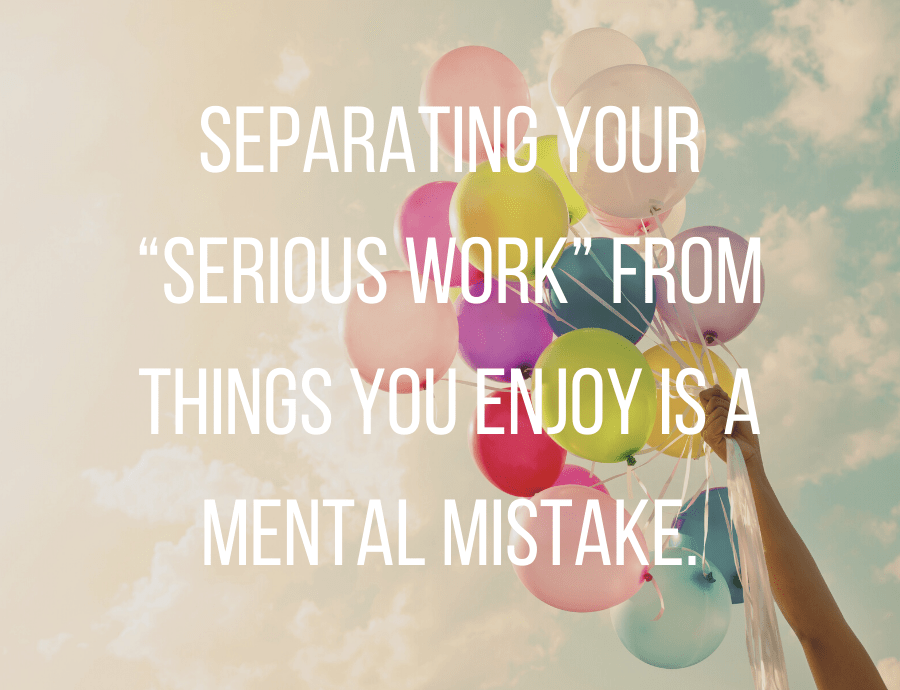The easiest way to find errors in your work is to ask someone else to check it. This already happens in your exam. Unfortunately that’s the examiner, and it happens a bit too late to help you fix mistakes. And if you ask others to check your test before handing it in you’ll get in a lot of trouble. Which is why you’ll have to double-check yourself during the test.
The first technique to avoid is instantly re-reading your own work. Of course it’s going to look good – you just did it, and you’re in exactly the same mental state as when you did it, so it’s still going to look right. Otherwise you wouldn’t have done it the first time. Immediate re-reading sometimes catches quick errors but in the exam it means taking twice as much time for very little gain.
If you must instantly check a question, maybe because you’re already worried you’ve made a mistake, try to see it differently. Read equations from right to left. Check the steps out of sequence. If you’ve got time scribble the steps you’re worried about all over again on rough paper without looking at the originals to see them the same way.
But it’s better to come back after another question, preferably after every other question, to quickly check that everything’s still good. That way your brain has had time to think about other things, clearing out all the old junk, and any mistakes you made will be much more obvious. If you’ve already completed everything else your brain is also a bit more relaxed. When it’s not subconsciously stressing about everything else it has to it works better.
To help this make sure your work is clear and legible. Leave some space to allow for easy correction. Cramming all your calculations into a tiny piece of paper like it’s micro circuitry doesn’t gain you extra marks for efficiency, not even in ECO101, and it makes quick corrections almost impossible. You’d have to rewrite everything. Much easier when there’s room to gently line out errors and insert corrections above it.
When striking out errors use just one single line. This leaves things visible while clearly marking that they’re not your official answer. Because the person actually marking your test might see some official answer in them. Remember, you might be wrong about being wrong! And if there’s something worth marks in there, many examiners will give you the benefit of that work, especially if you’re on the edge between two grades.
The most important technique for this test procedure is practice. If you suddenly start second-guessing yourself on the day of the test, you’ll suddenly find it feels pretty bad! Because you’re bad at things you’ve never practiced before! You should always practice what you’re going to do on the test. This includes double-checking. So check your calculations during the term to see how you’ll do it, how you can do it more easily, and all the little ways you make things better for yourself.
The first technique to avoid is instantly re-reading your own work. Of course it’s going to look good – you just did it, and you’re in exactly the same mental state as when you did it, so it’s still going to look right. Otherwise you wouldn’t have done it the first time. Immediate re-reading sometimes catches quick errors but in the exam it means taking twice as much time for very little gain.
If you must instantly check a question, maybe because you’re already worried you’ve made a mistake, try to see it differently. Read equations from right to left. Check the steps out of sequence. If you’ve got time scribble the steps you’re worried about all over again on rough paper without looking at the originals to see them the same way.
But it’s better to come back after another question, preferably after every other question, to quickly check that everything’s still good. That way your brain has had time to think about other things, clearing out all the old junk, and any mistakes you made will be much more obvious. If you’ve already completed everything else your brain is also a bit more relaxed. When it’s not subconsciously stressing about everything else it has to it works better.
To help this make sure your work is clear and legible. Leave some space to allow for easy correction. Cramming all your calculations into a tiny piece of paper like it’s micro circuitry doesn’t gain you extra marks for efficiency, not even in ECO101, and it makes quick corrections almost impossible. You’d have to rewrite everything. Much easier when there’s room to gently line out errors and insert corrections above it.
You might be wrong about being wrong!
When striking out errors use just one single line. This leaves things visible while clearly marking that they’re not your official answer. Because the person actually marking your test might see some official answer in them. Remember, you might be wrong about being wrong! And if there’s something worth marks in there, many examiners will give you the benefit of that work, especially if you’re on the edge between two grades.
The most important technique for this test procedure is practice. If you suddenly start second-guessing yourself on the day of the test, you’ll suddenly find it feels pretty bad! Because you’re bad at things you’ve never practiced before! You should always practice what you’re going to do on the test. This includes double-checking. So check your calculations during the term to see how you’ll do it, how you can do it more easily, and all the little ways you make things better for yourself.

